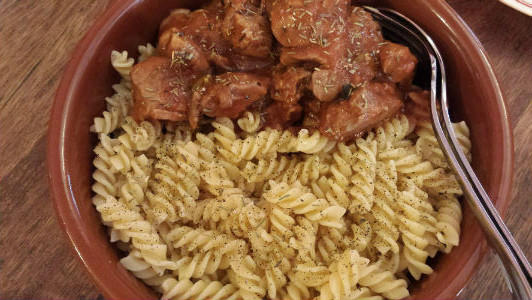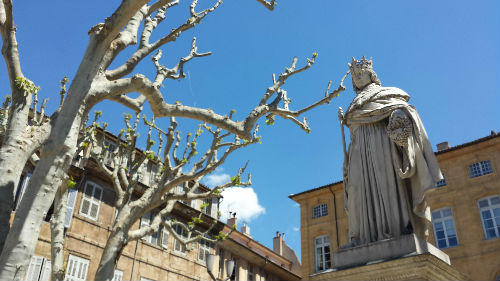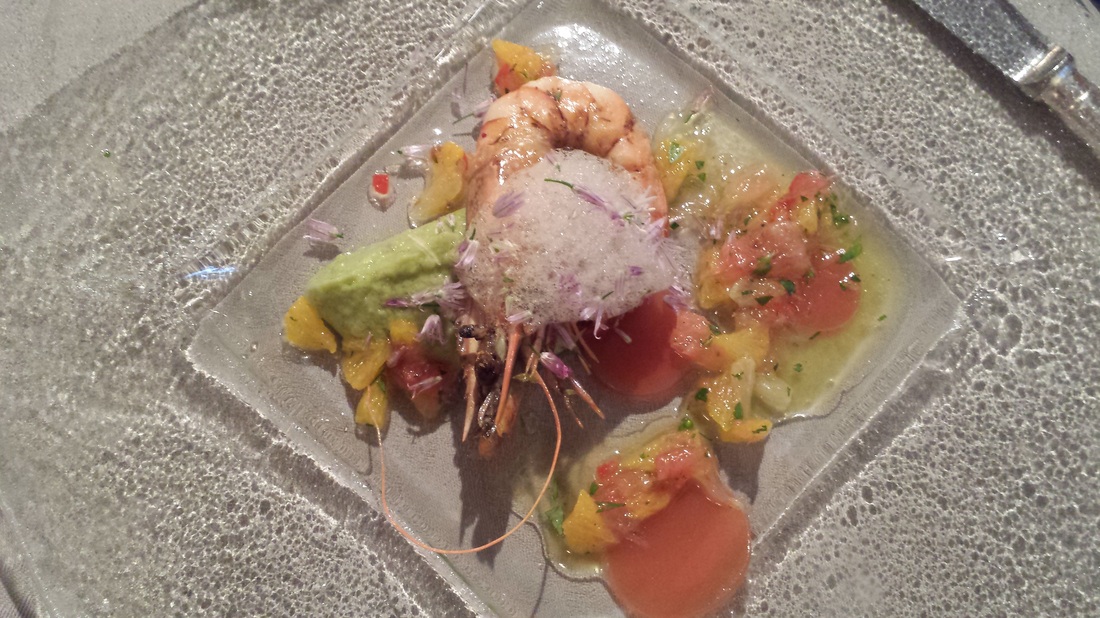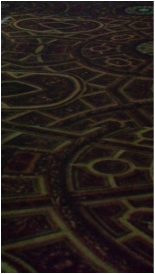|
Cassis, in the department of Bouches-du-Rhône, is a dreamy fishing port and one of the most romantic and picturesque towns in the south. The breezy harbour is home to a seemingly endless assemblage of sailboats, yachts and fishing boats. Cassis and its breathtaking harbour is an idyllic time-out. Gazing out onto the clear, turquoise waters as the breeze cools your face warms the heart.
12 Comments
Did I have an orange crush on Hotel Cezanne. The first boutique hotel in Aix-En-Provence, this bright, modern lair was as funky as you get, down to the shadows the cut-out lamps played on the walls and the deep orange shag rug in my room. Named after post-Impressionist painter and one-time Aix resident Paul Cezanne, whose studio is a tourist attraction nearby, the hotel is centrally located and full of contemporary art. No photos allowed at the nearby Atelier Cezanne, the place to go for Cezanne lovers, who can see the influential painter's house and studio preserved apparently just how he left it in the 1800s. The common household objects he painted were scattered about, and you can look out his window and see the nature captured in his idyllic paintings.
When pasta came to the table at Les Domaines Qui Montent after a delightful starter of pork pâté, I will admit I felt a touch of dismay. Pasta? Not Italian food, I want French! But, my, oh my, was this dish cooked to perfection and it fast became perfectly acceptable to have fusilli in France. The melt-in-your-mouth morsels of veal in an herbed tomato sauce atop al dente fusilli went fast, and we all reached for the communal bowls for seconds. Les Domaines Qui Montent restaurant, while a casual lunch spot/boutique/epicurean shop to regulars, immediately captivates a newcomer. Nestled on a narrow street away from the nucleus of the city, Les Domaines feels like a hidden gem, so it was a surprise to hear it is a chain across France. Aside from stocking gourmet cheeses and jams, foie gras, spices, salts, olive oils and breads, the shop partners with some of the smaller wine producers, making for a rare collection of vintages. From left: The cheese never ends in France — not that I'm complaining; beautiful artisan bottles of fresh-from-the sea salt decorate restaurant tables throughout France — my sodium stores must have been bursting since I just had to try all of the flavours; small and delicate strawberries accented with mint capped our fantastic lunch well.
 The Cours Mirabeau, a wide thoroughfare The Cours Mirabeau, a wide thoroughfare with fountains and double rows of plane trees. Here we were in Aix-de-Provence. Now this was the place. The energy was palpable. The streets glowed, the sun was bright, there was a youthful vigour, people were shopping and smiling and strolling the promenade. Aix-en-Provence, with a population of 142,000 — 40,000 of which are students from four universities — is pulsating with vibrant energy. With a captivating mix of history — 2,000 years of it — the city, in the Provence-Alpes-Cote d’Azur region, is divided by the Cours Mirarbeau, a 440-metre-long and 42-metre-wide pedestrian thoroughfare, with fetching plane trees, public squares, fountains and elegant outdoor cafés full of people sitting and sipping and chatting the days away. Hands down my favourite thing about France (besides the food and wine, obv.) were the windows, doors and shutters. In China it was the roofs, here I couldn't get enough of the fantastic French facades. The trees — I had never seen trees like this and I was quite taken by them. There weren't many leaves but no matter, it was the forked branches that jutted like the Bob Fosse jazz hands that I found so enchanting. Plane trees — quintessentially Provence. What is this photo, you might ask? Well it's a work of art, I'd say. Resembling an avant-garde painting, all I knew was I could barely eat it. And it was made specially for me. It was just way too pretty. This is white asparagus by the way. More on that later. We were at Hotel Benvengudo in the countryside of Les Baux-de-Provence, and we had been invited to the hotel's five-star restaurant. We were rumoured to be dining under the hands of a Michelin chef, or his prodigy, or something fancy along those lines. We couldn't find out exactly, but we were excited. Of course, once again, as was the pattern on this gastro-odyssey through the south of France, the chefs at Hotel Benvengudo dazzled us. And stuffed us. Luckily our rooms were right next door.  Just as "wow" as this hotel was, the dinner we were served was a double "wow." We began with an amuse bouche – little assorted sandwich-type snacks.  We then all received beef tartare with a quail egg, in a soya dressing. Now ... I am thoroughly proud to say, that until this point, I had not declined a single menu item that was placed before me. I would call myself experimental but there are a few things I just cannot do, and tartare is one of them. For shame, I know. Look how beautiful it was! Our chef was clearly an artiste. And oh did I feel badly about not eating his beautiful creation. Here I was, the diner rude enough to rebuff the beef tartare. I begged my fellow diners to help me out, somebody take something off my plate. But we know how our meals on this trip go, and every little bit of room saved in the tummy was just so necessary. So, no takers. I frantically pushed it around my plate. And suddenly – busted! The server came and took it away. But they had been watching and noticed my plight, and Chef Aurelien Laget took it upon himself to make a vegetarian hors d'oeuvre just for ME. He placed before me the aforementioned work of art – in-season white asparagus so gorgeous and painstakingly designed, it looked like Chef had given it just as much care as the tartare. And I was tar-touched. Our feast continued. Marinated gambas with tomato jelly, avocado cream and citrus vinaigrette. The shrimp had this intriguing foam on top. Again, a plate almost too pretty to eat. For our main we had roast fillet of duckling, artichokes and crispy potato.
 I fell in love with the doors in France. Here is a perfect example of why. Granted, I was in a medieval village, and everywhere you looked it was just spectacular. Les Baux de Provence is one of 157 villages that has been designated the ethereal-sounding title of "One of the Most Beautiful Villages in France." This is a stringent process with a four-stage evaluation that aims to protect a village's heritage.  The deep history of this medieval fortress stretches way back, some say to 6000 BC, with feuding lords, princes and princesses and an alluring lineage. Stroll the narrow, cobblestone streets and take in the old structures, the chapels, the cemetery and the stone ruins and be transported to the Middle Ages. The castle is quite the sight, overlooking the plains and covering an area of 7 hectares. France is also the land of cheese. I was not complaining. All of this cheese never gets old. Unless it is aged. To perfection. And that is the France way. Did you know the country lays claim to 350-400 types of cheese? If you factor in the different varieties within the cheese categories, some say the number can tip 1,000 varieties. Mon dieu. Almost didn't come home.
Wandering around the small, gothic village of Saint-Remy-de-Provence, I just happened to happen upon Nostradamus' house. Well OK I had heard it was there, but walking through the narrow, cobbled backstreets, I mused at the fact that I almost walked by his birth home, so unassuming save for a plaque above the door. It was incredible to think that this fascinating man, teller of tales and prophecies, someone who affected the world so tremendously with his telling predictions, was born hundreds of years ago in the home right in front of me.
It was quite a rush walking through the very hallways and the wheat fields where Vincent Van Gogh had painted some of his best works at the Saint-Paul-de-Mausole psychiatric hospital, in Saint-Remy-de-Provence. He suffered from mental-health issues and voluntarily admitted himself into the ward in 1889. Painting is therapy, and when he was well enough to paint, he created 150 works during his one-year stay at the hospital, many of which became famous.  What was most thrilling was seeing the olive trees portrayed in his famous series of nearly 20 paintings of the same name. The Dutch post-impressionist painter was captivated by the olive trees, and I must say, so was I. The gnarled trunks, the fluffy leafs, the curvatures and the ancient feel to their auras. They really were beautiful. This must have been just where Van Gogh stood, as the view looks the same as the painting (how incredible is that??) He also painted the lilacs and irises he saw in the closed-in gardens, and when he was given permission to walk out a little farther, he painted the countryside, the wheat fields and olive groves. I recently learned of an incredible resource for VVG lovers and for art lovers all around. For those wanting to learn and see more of Van Gogh's works, visit Artsy. This impressive site is great for art collectors, featuring artists and galleries and museums from all over the world, and it has a page of course devoted to Van Gogh, with a collection of his gorgeous paintings and some cool articles and blogs. Check it out here. |
Jennifer Bill
Published journalist, world traveller, big thinker, fun haver Archives
May 2014
Categories
All
|














































 RSS Feed
RSS Feed